寵物小知識
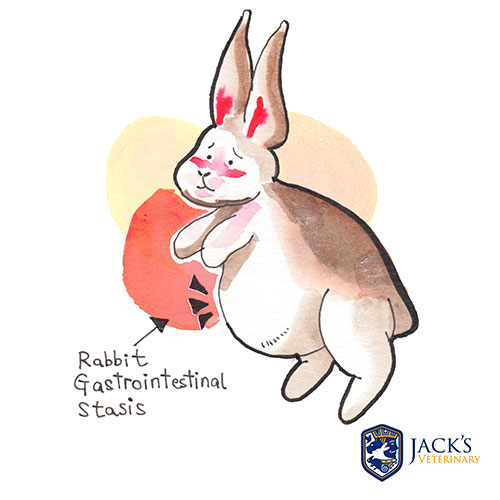
I believe that most of the rabbit owners agree that the most common disease in rabbit is gastrointestinal stasis ( GI stasis ). Many owners found their rabbit suddenly ate less and looked dull inside the cage. Some rabbits may stop eating within few hours. Eating less is a signal of life-threatening disease, and this worries owners a lot.
Rabbits are hindgut fermenters and their GI peristalsis requires a lot of fiber and fluid to stimulate to work; therefore, they spend most of their time on eating. Stress or anxiety gives rabbits stress. This stress can cause rabbits to eat less; therefore, their peristalsis slows down and may stop eventually when it gets worse. Their intestines have many yeasts and gut floras for fermentation thus they produce lots of gas. Because rabbits physiologically have no mechanism of vomiting, large amount of gas developed and trapped into the GI tract when peristalsis stops. When their stomach is distended to a huge large size, the aorta and vein will be compressed thus the blood circulation will become poor, resulting in shock, even collapse and death.
Where does a rabbit get stress from? There are many reasons and usually being grouped into 3 categories. All of the reasons below can cause rabbits stress enough to develop GI stasis.
1) Environmental & dietary: noise ( neighbor construction, party ), sudden weather change, sudden diet change, new pets at home, new home, low fiber diet etc.
2) Pain: dental disease, tooth root abscess, osteoarthritis, sore hocks, bladder stones etc.
3) Systemic disease: any severe disease such as severe inflammation, kidney disease, trichobezoar ( hair ball obstructed at the intestines ) etc.
There are 3 grades of rabbit GI stasis according the symptoms and severity of the disease.
Grade 1: slightly reduce of appetite, small size or reduce amount of stool.
Grade 2A: moderate reduce of appetite, small size and/or moderate reduced amount of stool. Mild to moderate stomach distension
Grade 2B: No appetite and stool. Mild to moderate dehydration. Mild to moderate stomach distension.
Grade 3: No appetite and stool. Severe dehydration. Severe stomach distension or impaction.
Veterinarians need to take a long medical history and perform a physical examination on the rabbit. Blood test and radiography are usually recommended to obtain the body condition information such as dehydration status and possible underlying primary cause of the disease.
Each grade of GI stasis requires different medical approach. Grade 2b and 3 are always critical and hospitalization is recommended.
Many rabbit owners mistreat their rabbits at home resulting in death. The most common mistake is feeding GI pro-kinetic which drug is used for a rabbit with GI impaction or obstruction resulting in death quickly at home. Therefore, you should always contact your veterinarian when you notice your rabbit starting to eat less.
Avoiding low fiber diet and pellet is the first step of preventing GI stasis. High fiber can prolong the chewing time thus the best method to prevent dental malocclusion, stress and pain related to GI stasis. Be aware of environmental factors listed above. Comb their hair more frequently when their coat changes seasonally to avoid hair ball obstruction. Regular body check of your rabbit by a veterinarian is the best recommendation of preventing GI stasis.
寵物小知識
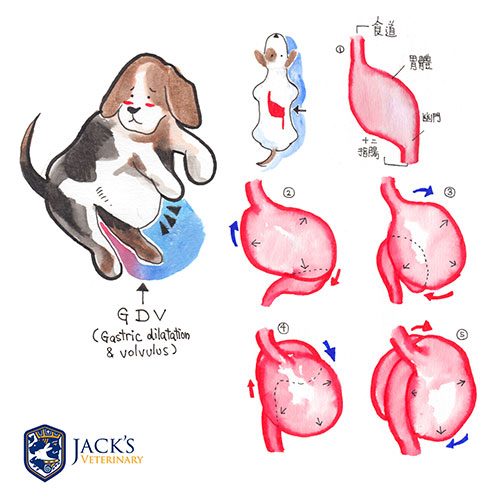
What is GDV?
GDV ( Gastric Dilatation & Volvulus ) is a critical emergent medical case of a severe dilation and torsion of the stomach in a dog. It usually happens on large breed and deep chest dogs but could sometimes happen on small breed dogs. Dogs usually develop to GDV within couple of hours. The chance of survival is zero if it is not treated immediately.
Pathophysiology of GDV
Initially, the fundus of the stomach starts distending. The muscle layer of pylorus is thicker and stiffer so it is less distensible compared to the fundus; therefore, the pylorus will be pushed away by the distended fundus. The more the dog gets nervous and pants due to the discomfort and pain, the more the gas enters into the stomach. When the fundus is continuing to distend, the fundus will give a push to the pylorus downward at the right side of the abdominal cavity; therefore, the pylorus will go around the bottom of the fundus and reach to the bottom left of the abdominal cavity. When the fundus is further distended, the pylorus has no way to go but is squeezed upward to the top left. At this position, the duodenum meets and crosses around the esophagus. This configuration traps all the gas and ingesta into the stomach, and the gas and ingesta are neither passed down to the small intestines nor vomited out. The aorta and vein are compressed causing a poor circulation. The lesser the blood supply to the stomach, the higher the chance it gets necrosis. Splenic torsion or rupture may occur concurrently when the fundus of the stomach distended sufficiently. Haemorrhage from the gastric and splenic vessels is very common due to the strong traction force produced by the fundus distension and torsion. Over a short period, the patient will die in hypovolemia and hypoxemia due to the poor circulation and insufficient cardiac output.
Cause of GDV
The cause of GDV is unknown. The risk of GDV seems related to the thoracic confirmation. The deeper thorax is more likely to experience GDV. There is still debating what predisposes dogs to GDV. However, any issue that causes abnormal gastric motility such as gastric foreign body and mass may predispose to GDV.
(** My personal opinion: the abdominal wall angle predisposes to GDV in large breed dogs and deep chested dogs. The angle of abdominal wall of deep chest dogs is higher of which pylorus will be pushed from right to left and forward when the fundus is distended. When the fundus is further distended, the pylorus will be left up on the left side. )
Symptoms of GDV
Initially, dogs with GDV will have frequent vomiting over a short period. Some dogs may develop unproductive retching and salivation. Panting follows and abdominal starts to distend. Later, the abdomen is distended and noticeable. Panting and unproductive retching continue. Finally, the dogs will collapse or be in coma and die.
There are many complications of GDV including endotoxiemia, septic shock, haemorrahge, splenic rupture, intestinal necrosis and stomach necrosis etc.
Diagnosis of GDV
Radiograph of abdominal cavity can be used to confirm the stomach distension and torsion. Blood tests are usually performed to obtain information for anaesthesia and initial therapy.
Treatment of GDV
There is no chance for a dog to recover from GDV on itself. This is always an emergent case, and requires surgery to treat it.
Veterinarians will perform a set of emergency procedures including an aggressive high rate intravenous fluid therapy and decompression of the stomach to try to stabilize the dog as much as possible. The aggressive intravenous fluid can expand the blood volume and aid better circulation. Decompression of stomach will relieve the pressure of the stomach thus aid the circulation. Other treatments include antibiotics and analgesia. When blood pressure increases to a better level, anaesthesia and surgery are able to start. Veterinary Surgeon will decompress the stomach and reposition the stomach. Control the bleeding and remove any necrotic parts of the stomach or intestines. Sometimes the spleen will be removed if the splenic vessels are severely damaged. At the end, veterinary surgeon will suture the pylorus of the stomach to the right side of the abdominal wall to prevent recurrence of GDV.
Advice
Calm down and call up your veterinarian immediately when you suspect your dog has GDV!
寵物小知識
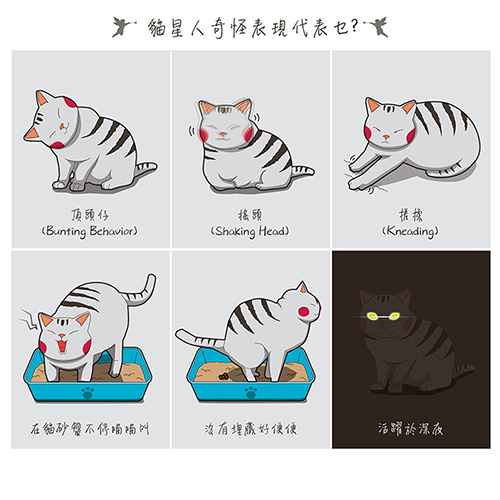
The Meaning Behinds Your Cat’s Strange Behaviors
Cats have distinct personalities and we often find ourselves confused with some of their weird behaviors.
Many cat owners know the rewarding sound of a purr and the loud meow of a hungry cat. It is always the unusual nature of certain vocalizations or actions that make us want to know more about their thinking or feeling.
To be a good cat salves, it is time to read and learn more about the most common strange cat behaviors and their underlying reasons:
Head rubbing
Cats will rub their heads on certain household objects, on their owner’s legs and even on other pets.
This behavior is associated with greeting or someone they are comfortable with, and sharing their pheromones. This is called to as bunting behavior.
Shaking Head
When you observe your cat shaking his head, scratching his head or ears, or walking imbalance, this could indicate an underlying medical problem.
This behavior can often be attributed to an ear infection and inflammation, which should be evaluated and treated by veterinarian. On the other hand, your cat may have an ear polyp, which is a non-cancerous growth originating from the middle ear that are diagnosed by examination of the ear canal and can be removed surgically by veterinarian.
Kneading
Many cats will use their paws to knead a blanket, soft object or bed rhythmically. This indicates that they are happy and leave their scent or alleviate anxious feelings.
This is an instinctual behavior that cats have retained from their days as kittens, when they would use their paws to stimulate milk letdown from their mothers.
Excessive meowing in the litter box
There are several reasons for this abnormal behavior.
One serious concern would be a urinary tract obstruction, which is very painful and considered a veterinary medical emergency. If you observes your cat frequently spending time in the litter tray, but only producing small amounts of urine or even vocalizing, seek out veterinary care immediately.
A urinary tract infection, inflammation and constipation can also cause your cat to display similar clinical symptoms.
Uncovered feces
Cleaning your cat’s litter tray is a daily ritual for most of cat salves which indirectly helps us become accustomed to our cat’s particular habits.
When our cats suddenly decides to defecate and leave the fecal matter uncovered, we tend to feel something is wrong. This behavior often indicates marking territory or establishing dominance in a household. The uncovered fecal matter may also be your cat’s way of telling you that the litter tray is either too small or too dirty.
You should also be aware of any injuries in your cat’s paw or legs that could be preventing them from covering their fecal matter properly.
Late night activity
Another strange behavior may be observed by cat owners is late night hyperactivity. This could be related to a change in your cat’s sleep schedule resulting in playtime during late night hours. Bored cats will also look for ways entertain themselves, even while you are sleeping during the night time. Providing your cat with interactive and toys can help alleviate this boredom and behavior.
Other reasons for hyperactivity at night could be due to a disease called, hyperthyroidism, which can make your cat feel restless and ravenously hungry. When you suspect your cat may be suffering this disorder, please consult with veterinarian for diagnosis and treatment.
Final thoughts
Establishing a close relationship with your cats can help you better understand their particular needs. Regardless of how well you know your cats, there will be sometimes when your cats will act in ways that will make you shake your head.
You should always rule out a medical issue with veterinarian before considering any behavioral issues.
Finally, you should keep tracking of any recurring behaviors that might finally help you understand your favorite cat’s mood and state of mind.
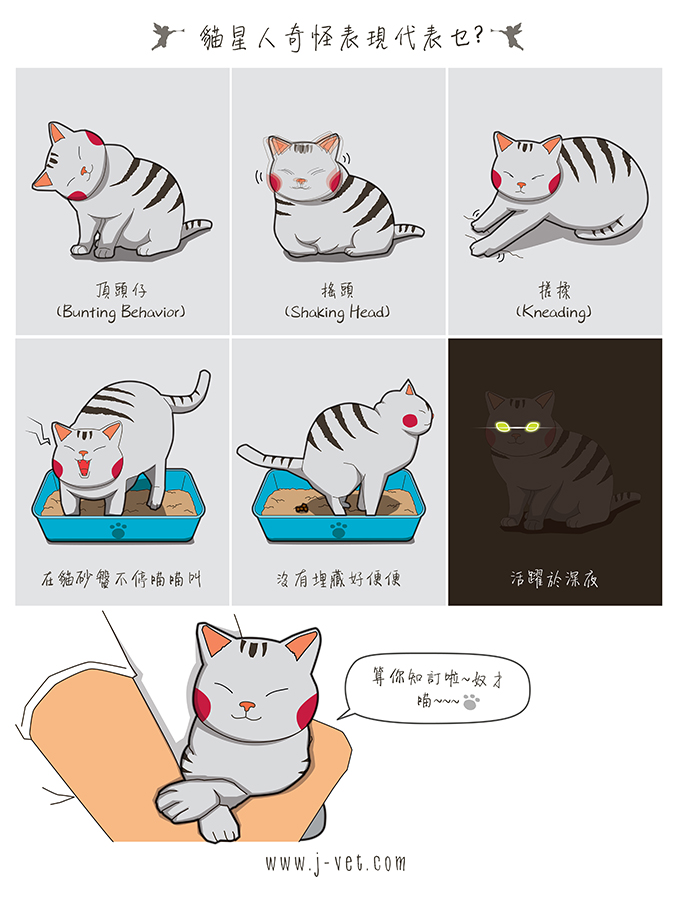
寵物小知識
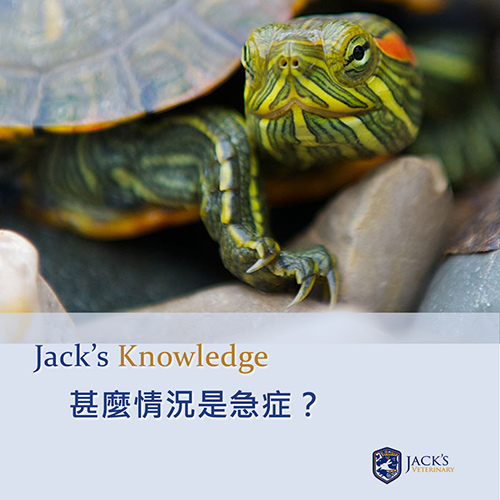
Jack’s Vet 上星期晚收到一個關於雌性紅耳龜(巴西龜)的緊急諮詢。
當時,主人預約了兩日後到普通科門診,而不被視為急症門診。我們的獸醫留意到情況非常嚴重,所以立刻回覆。我們希望多些人可以知道這些症狀的嚴重性。
當龜有不明的部份器官組織從尾部泄殖腔位置跌出,這樣大多數都是嚴重的情況。
當跌出的部份自行縮回體內,很多人,包括獸醫護士都會建議「先繼續監察」。但是,縱使已不再突出或突出不再明顯,仍然有機會是急症。如何判斷,是建基於很多不同原因,而性別的不同也是需要注意的因素。
雌性水龜生蛋時有機會出現「塞蛋」的現象,從而導致輸卵管脫垂(Ovarian Ductal Prolapse)、泄殖腔脫垂(Cloacal Prolapse)或直腸脫垂(Rectal Prolapse)。雖然有時候跌出的部份會自行縮回,但情況仍然是十分嚴重,需要即時找獸醫診斷。
只有有經驗的獸醫人員能察覺這情況的嚴重程度,以及時診症。即時的專業判斷可以挽救到一條生命。
龜龜有任何徵狀? 即時向獸醫查詢
寵物小知識

JVET DIARY 2016年4月9日
Jack's Vet 今日去左錦田嘅村屋幫隻龜做身體檢查
佢地呢隻亞達伯拉象龜超過十歲,用人力搬唔郁,又因為地點問題好難搵醫生
Jack's Vet嘅收到呢個CASE後就上左去
原來除左象龜之外仲有一隻緬甸陸龜同埋哥基
檢查過之後,發現緬甸陸龜嘅龜板雖然曾經有shell rot(細菌感染) 但已經好番
象龜就好健康,仲一齊曬太陽同食菜
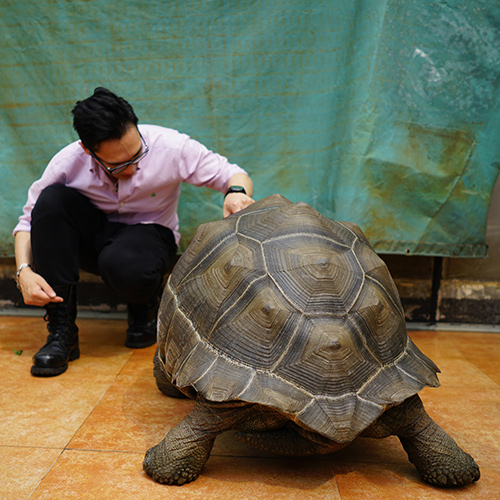
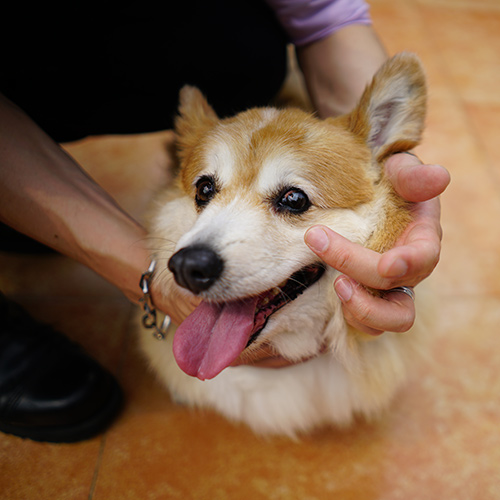
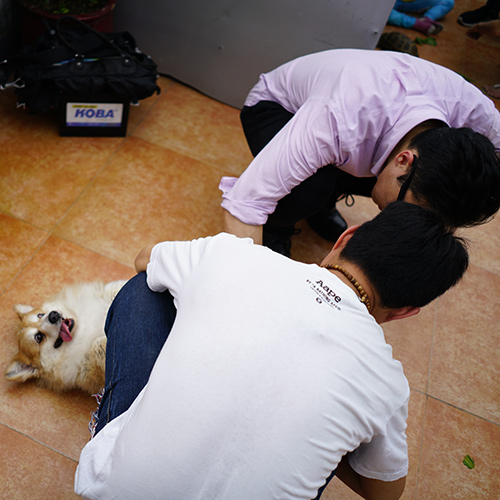
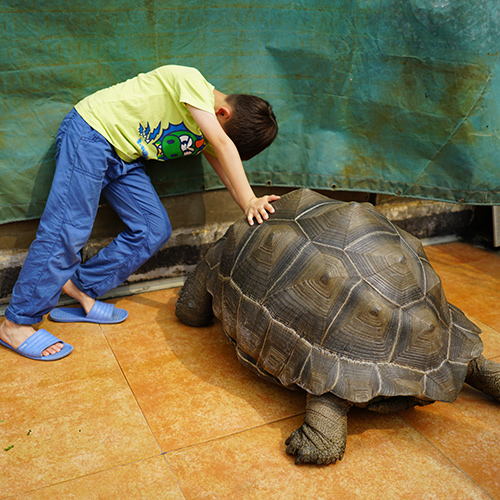
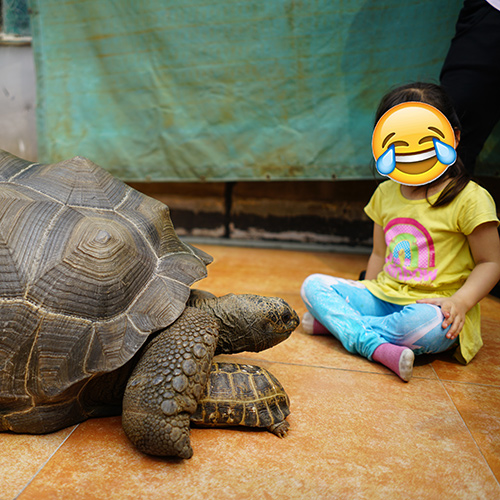

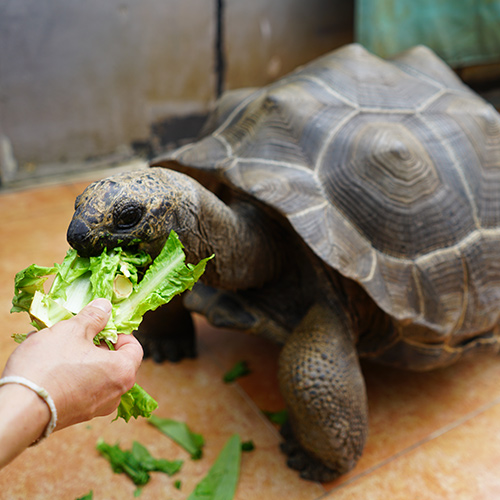
屋企寵物唔舒服? 即時向獸醫查詢
寵物小知識

最近有位狗狗主人問了Jack’s Vet一條很好的問題,關於狗狗絕育,可以跟大家分享:
狗狗主人問:曾聽說狗狗絕育會增加患癌的風險,是真的嗎? 我還應否帶我的小狗去絕育?
這位主人所顧慮的,外國的確有研究報告指出過。美國有多個機構,包括美國獸醫協會(AVMA),都研究過有關狗隻絕育與患癌症的關係。研究報告顯示,經絕育的狗隻比沒有絕育的有更高機會患上不同癌症,包括淋巴瘤和骨肉瘤。那麼還應否替狗狗做絕育呢?
然而這些研究,並不是以正式的臨床研究模式進行。它們在抽樣做調查時,已有偏頗。例如,有些研究只是是根據狗隻主人所填的問卷調查結果做分析;其中一項研究是於當地一所動物醫院找研究個案,過程只找了金毛尋回犬作研究對象,因此研究結果並不泛指所有狗隻品種。再者,去動物醫院裡的動物,大都患有較嚴重疾病,患癌佔其中的大部分,牠們的主人都會更願意花錢在這些患病寵兒身上。因此,在這裡的個案中,患癌症的個案明顯較多。另外,絕育本來是為狗隻避免嚴重疾病,例如子宮積膿、卵巢癌、前列腺癌、睪丸癌等,所以普遍絕育了的狗會有較長壽命。亦因為這樣,狗隻就有更大機會患上跟衰老有關的癌病。另外值得注意的是,金毛尋回犬這品種本身先天容易患上癌症,這是品種基因的問題,所以只以單一品種並在動物醫院進行研究是偏頗的。
現時仍未有確實的證據顯示絕育對狗隻患癌風險有直接關係,反而很多研究都顯示絕育有效延長狗隻壽命。替狗隻絕育,到目前為止仍是利多於弊。
有任何有關絕育的問題? 即時向獸醫查詢
寵物小知識
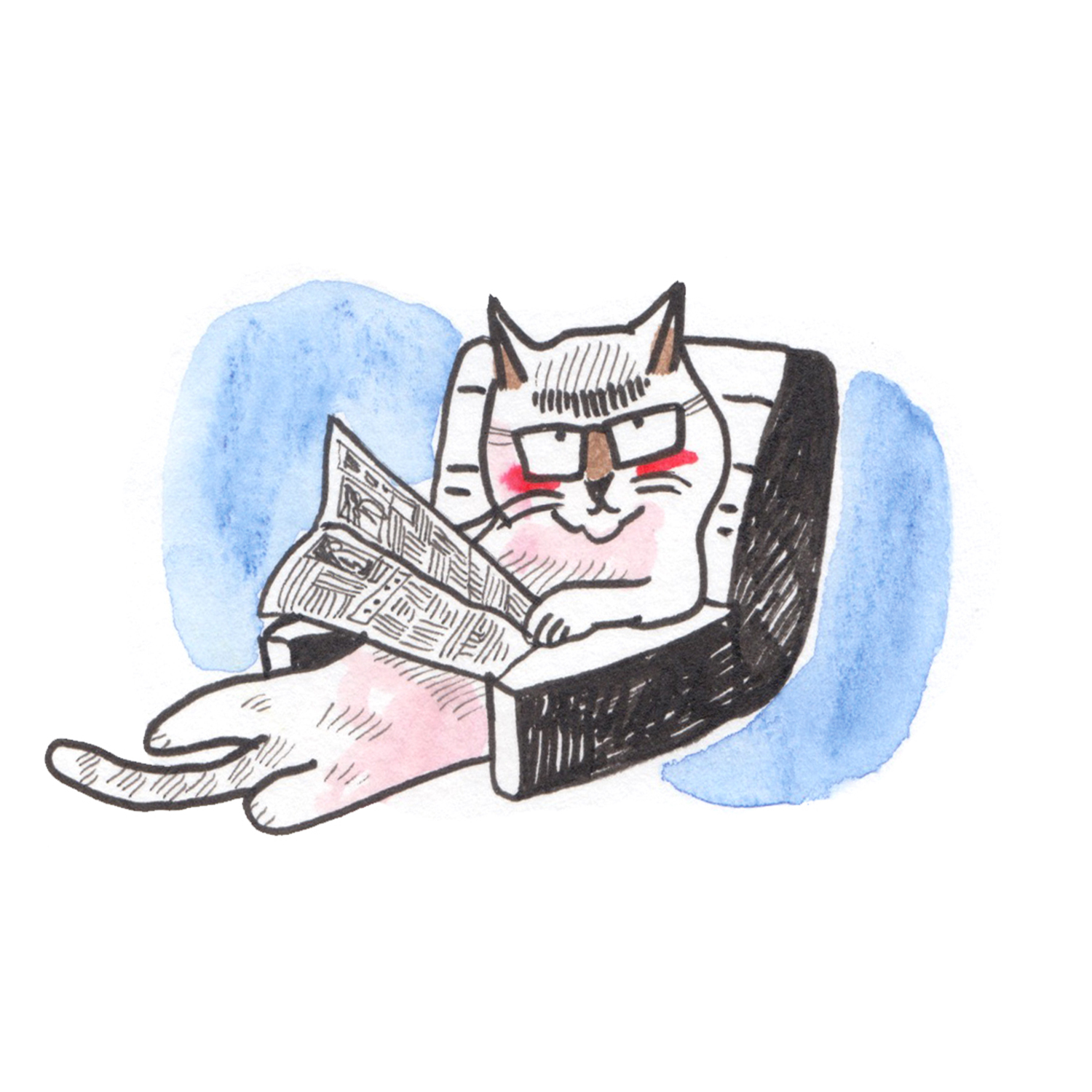
貓需要做運動嗎?
貓確實需要做運動,以保持健康。貓睡很多,在沒有獵物、玩具或其他貓的室內環境會使牠們感到悶,從而變得肥胖。然而,不同的品種有不同的需求。蘇格蘭摺耳和波斯非常懶惰。當我們為貓選擇運動時要知道貓是「短跑者」,意思即是不能進行耐久運動。他們是靠快縮肌肉(fast-twitch fibers)活動,雖然產生的力量大、收縮和放鬆的時間短,但不能長時間活動。所以,你不應該放牠們在跑步機或用帶拖着貓行。你應該為他們提供一些可作攀爬、追逐或隱藏的玩具。例如,攀爬塔、紙盒、紙球、低能量激光束(避免瞄準頭部和眼睛)和一些遙控裝置。
為甚麼我的貓經常盯着我?
當你的貓盯著你,最有可能的原因是「我餓了」。不同於狗,貓是非常獨立的,他們大部分時間都不需要你。從遠處或在貓碗附近的區域盯着你,因為你被認為是食物的來源,他們知道食物是不在你的手。當你走近他們,他們可能會開始喵喵叫或摩擦你的腳。當你漫步到廚房或食物的來源,他們將開始跟著你。
為甚麼我的貓會舔我?
動物行為學家相信貓是會舔其他動物、包括人類,是想表現信賴和關懷。如果你手上有美味的食物,牠們也會舔你。
為甚麼我的貓喜歡躲在箱子裏?
這個問題沒有標準的答案,以下是其中一些解釋
1. 大部份貓都需要深沉的睡眠,所以牠們會找一個安全的狹小空間睡覺
2. 這是貓的本能反應,藏於狹小的空間有助避開狩獵者同時方便偷襲獵物
3. 貓喜歡溫暖,所以喜歡找較為密閉的地方休息
主子有任何異狀? 即時向獸醫查詢

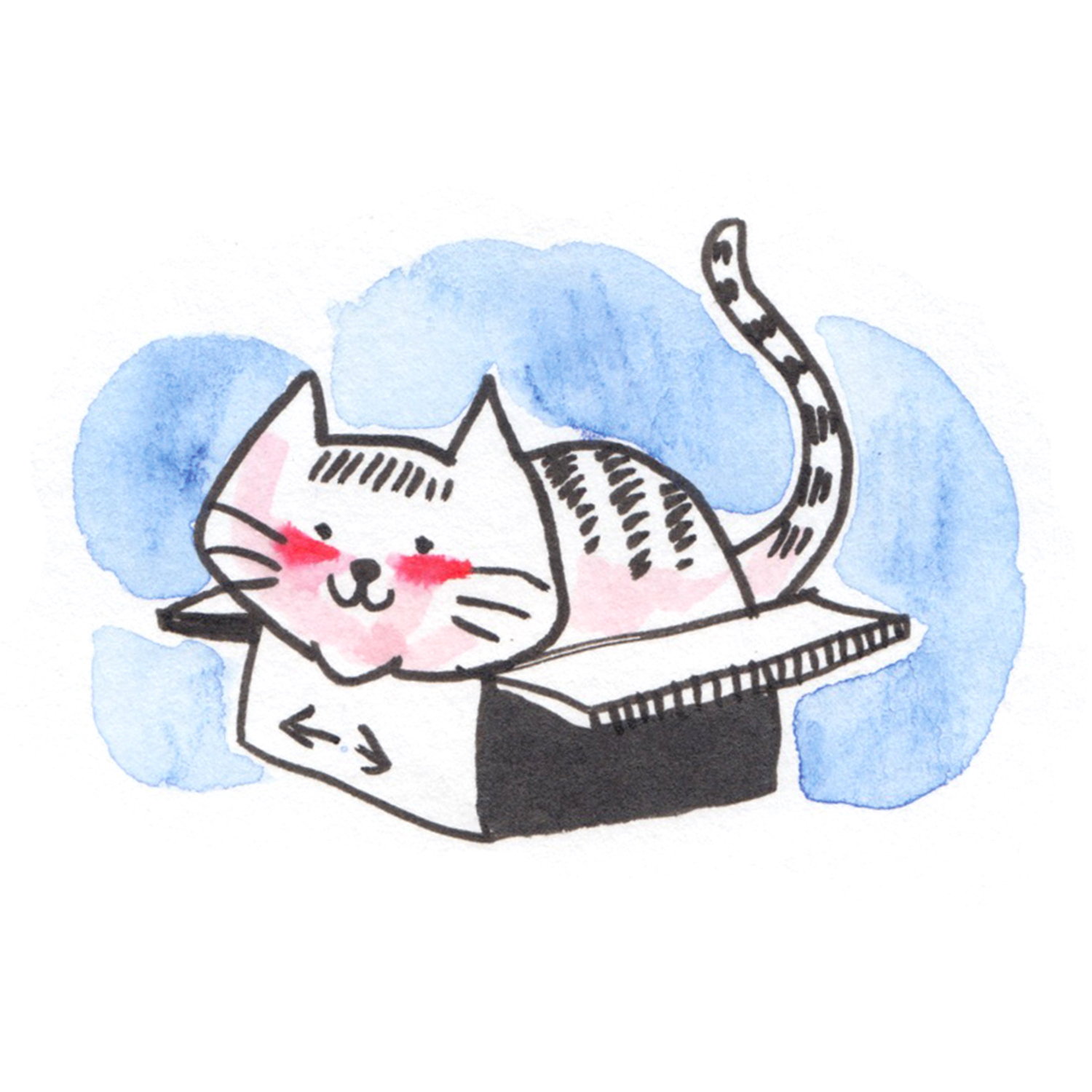
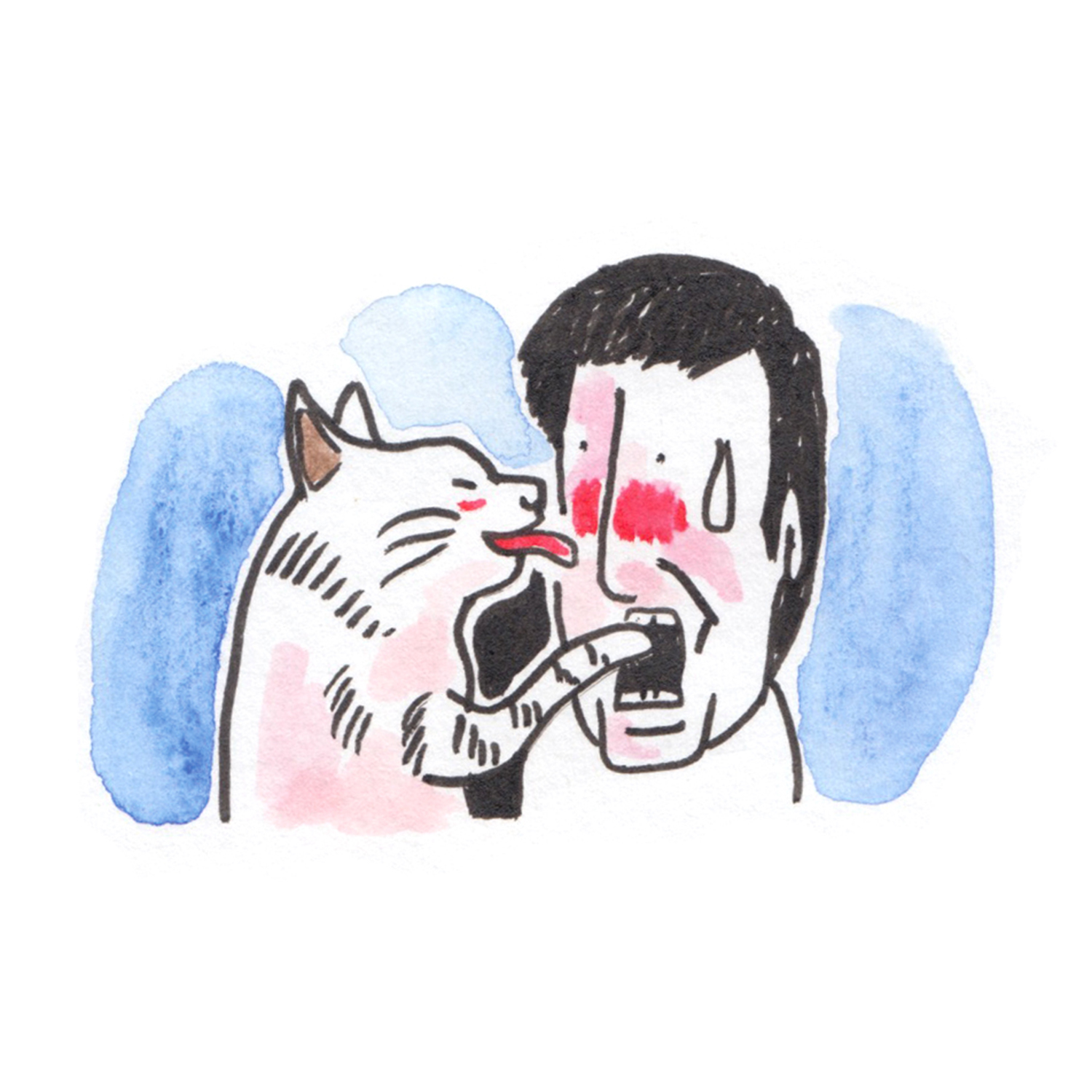
寵物小知識

A good and correct husbandry of aquatic turtles and land tortoises is very important for their health. Incorrect husbandry set-up can cause variety of diseases and health problems such as swelling of eyes, bubbles from nose and loss of appetite. In severe cases, some of them may die even with treatment. The most important requirement of the husbandry is space, correct temperature and light source and water quality. Therefore, I would like to share the correct husbandry set-up for your aquatic turtles and land tortoises here.
Tortoise Husbandry
The enclosure should be at least 2 x 3 sq ft big for a single palm-sized tortoise. This set-up can be achieved by using an all-glass aquarium. It is recommended to use a paper towel or puppy toilet pad as the bedding. Intense basking lamp and UVB lamp should be used for land tortoise. Keep the basking area temperature at 32 – 35 C ( 28 – 30 C for hatching and small sized tortoises ) while measuring from the terrapin shell. The distance between the terrapin shell and the basking lamp should be around 27 cm. The UVB should be set at the same side of the basking lamp. Both basking lamp and UVB should be turned on for 10 – 12 hours daily. The opposite side from the basking area is a cold area where should be at about 25 – 28 C. The different temperature between basking and cold area provides a temperature gradient. You should provide a water bath and food near the basking area and change the water daily. A hiding box or cave should be provided at the cold side. Last but not least, humidity and ventilation are also important. Try to keep the humidity at about 70%. Too low or too high can predispose to respiratory disease. Open top or mesh gives better ventilation.
I hope this illustration and article give you more idea about the correct husbandry set-up and provide a better captive environment for your terrapin and tortoise.
Common Questions
1. Why do we need to put UVB and basking lamp on the same side?
Ans: It mimics what the Sun provides therefore aquatic turtles and tortoises will absorb adequate amount of UVB to meet their metabolic requirement with heat and light together.
2. Is it ok to provide a red or blue basking lamp for my tortoise?
Ans: No, it isn’t. The red or blue basking lamp does nothing to do with heat but just colour. They may use for nocturnal reptiles but not aquatic turtles and tortoises.
3. Why does it need temperature gradient?
Ans: Aquatic turtles and tortoises are cold-blooded animals and which means they take on the temperature of their surroundings. Therefore, temperature gradient avoids them from being over heated or cooled.
4. What substrate does a tortoise need?
Ans: Try not to use bark or sandy substrates because they will cause partial intestinal impaction for hatching or small tortoises resulting in loss of appetite.
5. Why does a tortoise need water bath?
Ans: Ensure adequate amount of water access to prevent urolith or cloacolith formation.
寵物小知識
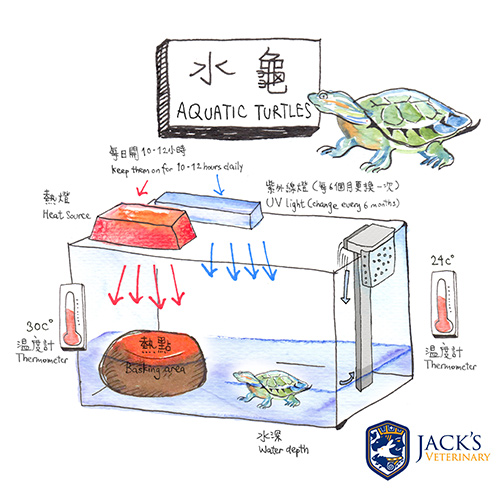
A good and correct husbandry of aquatic turtles and land tortoises is very important for their health. Incorrect husbandry set-up can cause variety of diseases and health problems such as swelling of eyes, bubbles from nose and loss of appetite. In severe cases, some of them may die even with treatment. The most important requirement of the husbandry is space, correct temperature and light source and water quality. Therefore, I would like to share the correct husbandry set-up for your aquatic turtles and land tortoises here.
Aquatic Turtle Husbandry
The aquarium should be at least 2 x 3 sq ft big for a single palm-sized aquatic turtle. This set-up can be achieved by using an all-glass aquarium. An external canister filter should be installed which minimizes water change without compromising water quality. If you do not have a filter system, you should change the water every other day. The depth of the water should be deep enough to cover the whole aquatic turtle and allow them to swim, not walking under the water. You should provide a piece of cork bark or rock as the land and basking area. The heat source should be set above the basking area. Splashproof basking lamp should be used. Keep the basking temperature at 30 – 32 C ( 28 – 30 C for hatching and small sized aquatic turtles ) while measuring from the turtle shell. The distance between the turtle shell and the basking lamp should be around 27 cm and usually the basking temperature is provided. The location of UVB source is very important. It should be set at the same side of basking lamp; therefore, they can receive warmth, light and UVB at the same time. Both basking lamp and UVB should be turned on for 10 – 12 hours daily. The opposite side from the basking area is a cold area where should be at about 25 – 28 C. The different temperature between basking and cold area provides a temperature gradient; therefore, they can choose their preferred temperature to avoid being over heated or cooled. If the size of the tank is not big enough, temperature gradient cannot be set.
I hope this illustration and article give you more idea about the correct husbandry set-up and provide a better captive environment for your terrapin and tortoise.
Common Questions
1. Why do we need to put UVB and basking lamp on the same side?
Ans: It mimics what the Sun provides therefore aquatic turtles and tortoises will absorb adequate amount of UVB to meet their metabolic requirement with heat and light together.
2. Is it ok to provide a red or blue basking lamp for my tortoise?
Ans: No, it isn’t. The red or blue basking lamp does nothing to do with heat but just colour. They may use for nocturnal reptiles but not aquatic turtles and tortoises.
3. Why does it need temperature gradient?
Ans: Aquatic turtles and tortoises are cold-blooded animals and which means they take on the temperature of their surroundings. Therefore, temperature gradient avoids them from being over heated or cooled.
4. What substrate does a tortoise need?
Ans: Try not to use bark or sandy substrates because they will cause partial intestinal impaction for hatching or small tortoises resulting in loss of appetite.
5. Why does a tortoise need water bath?
Ans: Ensure adequate amount of water access to prevent urolith or cloacolith formation.
寵物小知識
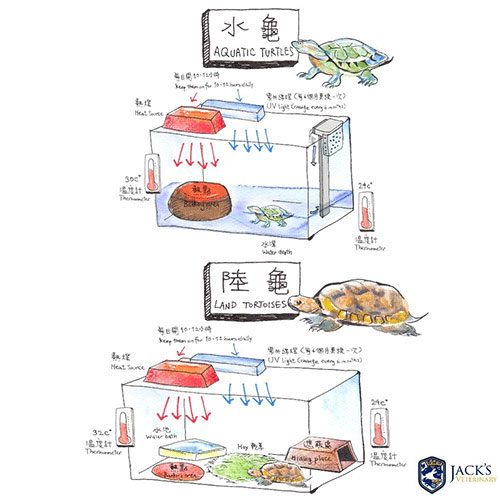
A good and correct husbandry of aquatic turtles and land tortoises is very important for their health. Incorrect husbandry set-up can cause variety of diseases and health problems such as swelling of eyes, bubbles from nose and loss of appetite. In severe cases, some of them may die even with treatment. The most important requirement of the husbandry is space, correct temperature and light source and water quality. Therefore, I would like to share the correct husbandry set-up for your aquatic turtles and land tortoises here.
Aquatic Turtle Husbandry
The aquarium should be at least 2 x 3 sq ft big for a single palm-sized aquatic turtle. This set-up can be achieved by using an all-glass aquarium. An external canister filter should be installed which minimizes water change without compromising water quality. If you do not have a filter system, you should change the water every other day. The depth of the water should be deep enough to cover the whole aquatic turtle and allow them to swim, not walking under the water. You should provide a piece of cork bark or rock as the land and basking area. The heat source should be set above the basking area. Splashproof basking lamp should be used. Keep the basking temperature at 30 – 32 C ( 28 – 30 C for hatching and small sized aquatic turtles ) while measuring from the turtle shell. The distance between the turtle shell and the basking lamp should be around 27 cm and usually the basking temperature is provided. The location of UVB source is very important. It should be set at the same side of basking lamp; therefore, they can receive warmth, light and UVB at the same time. Both basking lamp and UVB should be turned on for 10 – 12 hours daily. The opposite side from the basking area is a cold area where should be at about 25 – 28 C. The different temperature between basking and cold area provides a temperature gradient; therefore, they can choose their preferred temperature to avoid being over heated or cooled. If the size of the tank is not big enough, temperature gradient cannot be set.
Tortoise Husbandry
The enclosure should be at least 2 x 3 sq ft big for a single palm-sized tortoise. This set-up can be achieved by using an all-glass aquarium. It is recommended to use a paper towel or puppy toilet pad as the bedding. Intense basking lamp and UVB lamp should be used for land tortoise. Keep the basking area temperature at 32 – 35 C ( 28 – 30 C for hatching and small sized tortoises ) while measuring from the terrapin shell. The distance between the terrapin shell and the basking lamp should be around 27 cm. The UVB should be set at the same side of the basking lamp. Both basking lamp and UVB should be turned on for 10 – 12 hours daily. The opposite side from the basking area is a cold area where should be at about 25 – 28 C. The different temperature between basking and cold area provides a temperature gradient. You should provide a water bath and food near the basking area and change the water daily. A hiding box or cave should be provided at the cold side. Last but not least, humidity and ventilation are also important. Try to keep the humidity at about 70%. Too low or too high can predispose to respiratory disease. Open top or mesh gives better ventilation.
I hope this illustration and article give you more idea about the correct husbandry set-up and provide a better captive environment for your terrapin and tortoise.
Common Questions
1. Why do we need to put UVB and basking lamp on the same side?
Ans: It mimics what the Sun provides therefore aquatic turtles and tortoises will absorb adequate amount of UVB to meet their metabolic requirement with heat and light together.
2. Is it ok to provide a red or blue basking lamp for my tortoise?
Ans: No, it isn’t. The red or blue basking lamp does nothing to do with heat but just colour. They may use for nocturnal reptiles but not aquatic turtles and tortoises.
3. Why does it need temperature gradient?
Ans: Aquatic turtles and tortoises are cold-blooded animals and which means they take on the temperature of their surroundings. Therefore, temperature gradient avoids them from being over heated or cooled.
4. What substrate does a tortoise need?
Ans: Try not to use bark or sandy substrates because they will cause partial intestinal impaction for hatching or small tortoises resulting in loss of appetite.
5. Why does a tortoise need water bath?
Ans: Ensure adequate amount of water access to prevent urolith or cloacolith formation.